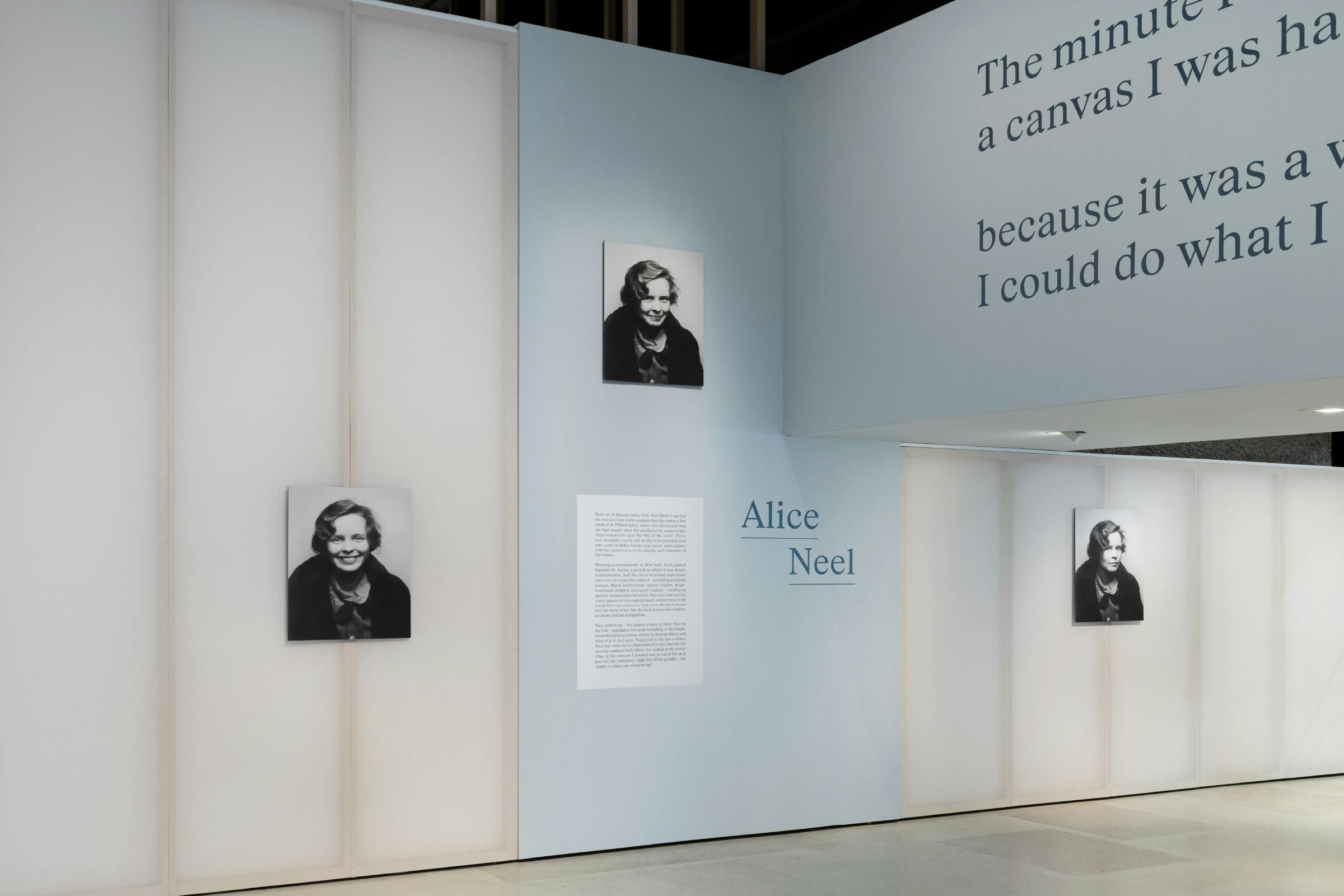
Alice Neel: Hot Off The Griddle
Alice Neel was one of the great American painters of the twentieth century and a pioneer among women artists. A painter of people, Neel didn’t care about being fashionable or in step with avant-garde movements: ‘One of the reasons I painted was to catch life as it goes by,’ she explained, ‘right hot off the griddle.’
Based predominantly in New York, Neel painted figuratively during a period in which it was deeply unfashionable to do so. She persisted with her distinctive, expressionistic style, even though it meant that for most of her life she lacked material comfort, let alone critical recognition. Crowned the ‘court painter of the underground,’ Neel chose to portray individuals who were not typically the subjects of painting – pregnant women, labour leaders, Black and Puerto Rican children, Greenwich Village eccentrics, civil rights activists, queer performers – retaliating against exclusionary histories. Each of her paintings radiates with her sense of the humanity and dignity of each subject.
Client
Barbican
Category
Exhibition
16 February – 21 May 2023
Curator
Eleanor Nairne
Assistant Curators
Andrew de Brún, Annabel Bai Jackson
Architecture
Gatti Routh Rhodes
Working together with architects, Gatti Routh Rhodes, and in close collaboration with the Barbican curatorial team, we have created an exhibition full of colour and texture, that tells Neel’s life story through large-scale work, an extended gallery guide, and contextual material.
Visitors are led into the exhibition through a run of blown-up portraits of Neel breaking into wide smile, and a film of her painting. A bright, golden yellow floor takes you upstairs to a striking nude self-portrait of Neel in her 80’s, to which she proclaimed ‘All my life I wanted to do a nude self-portrait, but I put it off till now when people would accuse me of insanity rather than vanity’.
The exhibition takes its inspiration from the home. Neel never had a formal studio, and always worked from her residence. We’ve used a palette of complementary wall colours with subtle detailing of skirting and picture-rail highlights – pulled out through shifts in tone or a switch from matt finish paint to gloss – to create intimate rooms.
Graphics are given a painterly finish by utilising craft approaches rather than mechanical reproduction. Large-scale quotations are sign-painted by hand, creating a characterful interpretation of the typography that ties in with Neel’s painting technique – a wobbliness of line and variation in proportions. These quotes bring Neel’s voice straight into the exhibition. Section texts are screen printed straight to the wall, sitting within tonal, painted areas.
Upstairs, supergraphics place you straight into scenes that Neel would have been familiar with. Smaller reproductions give further historical context to events that are referenced within some of her earlier works.
Work captions are printed on an American paper with a warm-white tone and slightly uncoated texture that was available at the start of the 20th century and was primarily used for stationary.
The final room of the show is the reading room, which includes comfortable seating, a plant from the Barbican conservatory, and wooden panelling topped with a shelf to hold selected books and imagery about Neel’s sitters.
A monumental, large-sized acknowledgement panel echoes the grandiose scale of Neel’s later works.
Text is set in Rhymes by Maxitype, a contemporary re-examination of the ubiquitous ‘Times’ style that feels both new and nostalgic at the same time.
Quotations and titles utilise an alternate set of narrow capital characters, creating a slight sense of unease and distorted proportions when blown up. Underlines also feature prominently throughout the text to highlight key turns of phrase, reminiscent of signs created by Neel – who was a frequent activist – and fellow protesters.
Typography
Rhymes
Photography
Ed Park
The exhibition avoids extended caption text, leaving the viewer to focus on the portraits. Additional information is then found within an extensive gallery guide that builds on the stories of the sitters themselves.
